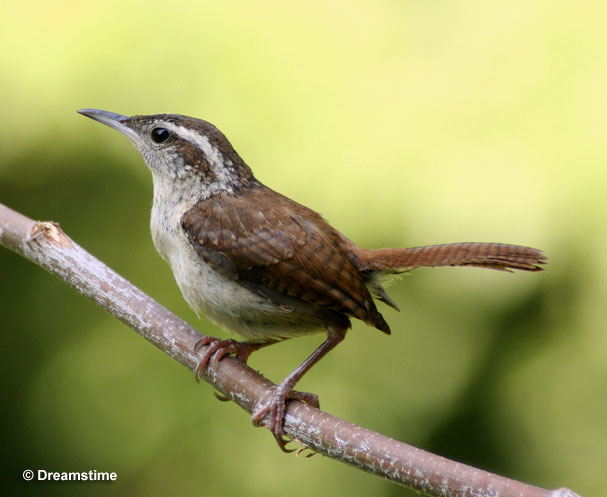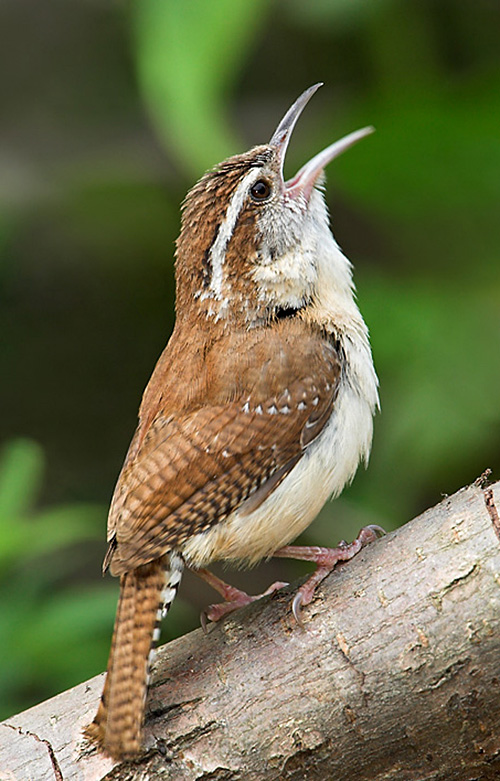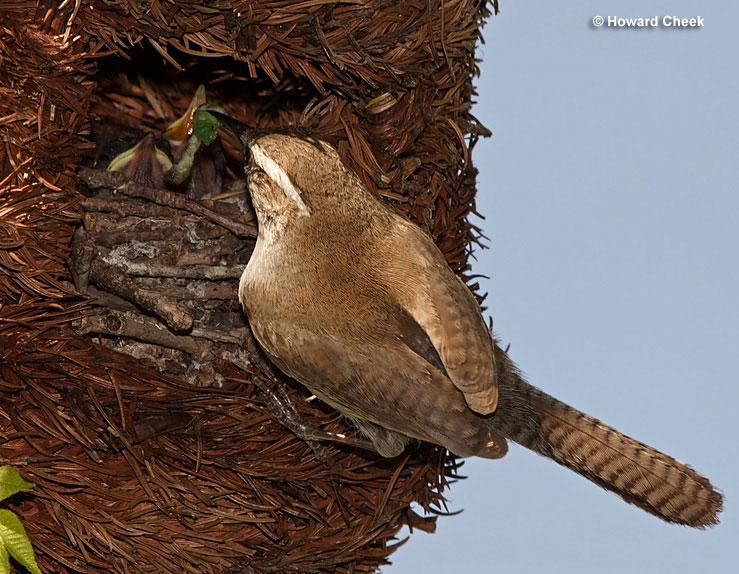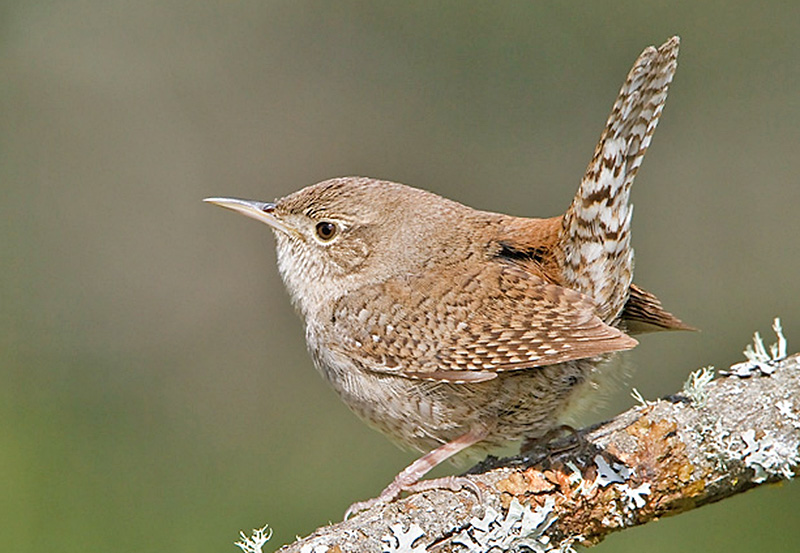
What is South Carolina State Bird? We’ll let’s dive in…
Located on the southeastern coast of the United States, South Carolina is a state that exudes charm, natural beauty, and rich history. Despite being one of the smaller states in terms of land area, South Carolina possesses a unique character and a diverse range of attractions that make it stand out among its counterparts.
Spanning approximately 32,020 square miles (82,932 square kilometers), South Carolina may be considered modest in size when compared to some of its larger neighbors. It ranks 40th in land area among the 50 states.
But let’s talk about the state birds. South Carolina’s State Bird is Carolina Wren. It is a very shy bird, and because of this, it can be hard to see. They’re chunky, have long tails that are often tilted upwards, round bodies, distinctive bills that are downcurved, long and slender, and large heads with small necks.
In the summer months, Carolina Wrens inhabit what seems like every patch of woods in the eastern portions of the United States.
They deliver an incredible number of decibels for their size, and their rolling song can be heard often. Carolina Wrens are hardy birds that continue to travel farther north.
On this page
Breeding Male
Breeding male Carolina Wrens are characterized by their vibrant plumage. They boast a warm buffy-orange coloration on their lower bodies, complemented by a smooth reddish-brown hue on their upper feathers. These wrens exhibit dark bills, while their chins and throats stand out in pristine white. Adding to their distinctive appearance, they proudly showcase long white eyebrow stripes that grace their faces.
They’re 4.7 to 5.5 inches (12 to 14 centimeters) long and weigh 0.6 to 0.8 ounces (18 to 22 grams). These birds are slightly smaller than sparrows and somewhat larger than House Wrens.

Female
Female Carolina Wrens look identical to breeding male Carolina Wrens.
Juvenile
Carolina Wrens have a 12 to 14-day incubation period before their eggs hatch. Once the juvenile Carolina Wrens reach the age of 12 to 14 days, they venture out of the nest while their parents continue to provide them with nourishment. Surprisingly, within a mere two weeks of the young ones starting to feed on their own, the mated pair has already commenced constructing a new nest for future broods.
In the state of Florida, the population of Carolina Wrens stands out with a robust and larger physique. These individuals exhibit a more pronounced and vivid coloration on their lower bodies, while their upper plumage takes on a darker and richer rusty chestnut shade.
Habitat of South Carolina State Bird
Carolina Wrens occupy a variety of vegetated habitats, including lowland cypress swamps, dense thickets, hemlock and rhododendron-filled ravines, and bottomland woods.
Their preference leans towards overgrown farmland, wooded areas, residential spaces with shrubs, brushy suburban yards, and abandoned structures.

Copyright Glenn Bartley
Diet
The primary diet of Carolina Wrens consists of spiders and insects. They commonly consume moths, caterpillars, stick bugs, beetles, leafhoppers, grasshoppers, cockroaches, and crickets.
On occasion, these birds may include frogs, snakes, or lizards in their diet. Additionally, they consume plant matter such as seeds from sweetgum, poison ivy, bayberry, and fruit pulp.
Carolina Wrens are known to visit backyard bird feeders. To attract them, consider offering mealworms, suet, crickets, shelled peanuts, or peanut butter. Tray feeders or shallow dishes are best for easy access. Another effective method is planting native shrubs that produce berries to entice them.
Behavior of South Carolina State Bird
Typically, Carolina Wrens prefer solitary or paired activities. However, after the breeding season, you may spot groups of Carolina Wrens feeding together, which indicate a family unit. They forage near or on the ground, utilizing flitting, hopping, and running movements amidst tangled vegetation and leaf litter.

These birds exhibit climbing behaviors on trunks, branches, and vines, exploring squirrel nests and probing crevices in search of insects. Their distinct downcurved bills are used to hammer and dismantle larger bugs while overturning decaying matter.
When it comes to roosting, Carolina Wrens select locations such as abandoned hornet nests, bird boxes, hanging plants, barns, garages, or even old nests. Although their flying capabilities are limited, they embark on brief aerial forays covering short distances.
Range (and seasonal changes)
Carolina Wrens are year-round residents. They do not migrate. They’re found in the extreme south of Canada, the eastern half of the United States, and the extreme northeast of Mexico.
Wing shape
Carolina Wrens have pointed wings and a wingspan of 11.4 inches (29 centimeters). They fly with short flaps that are accompanied by violent jerks of the body and tail.
Fun Facts
- Carolina Wren was chosen as the State Bird of South Carolina in 1948, which coincidentally, is the same year the transistor was invented.
- Carolina Wrens symbolize determination, change, happiness, and enthusiasm. The Celts held Wrens in high regard because their song was believed to be a message for the future.
- Carolina Wrens are very vocal birds. A captive Carolina Wren sang almost 3,000 times in one day.
- Carolina Wrens mate for life. They’ll form a bond at any time of the year and will stay together for life. They’ll remain in the same territory, together, year-round. They’ll also move around the territory and forage together.
- In the late 1940s, the Carolina Wren became South Carolina‘s official state bird.
- The oldest recorded Carolina Wren lived to be at least 6 years and 2 months old.
Call
Male Carolina Wrens are the sole vocalists among their species. Their melodic song comprises a rapid succession of whistled notes, repeated several times, and typically lasting no more than 2 seconds.
Each male Carolina Wren possesses a repertoire of diverse song variations, sometimes numbering up to a dozen. They tend to repeat the same song approximately 15 times before introducing a new one. Additionally, Carolina Wrens exhibit a broad spectrum of calls, including cheerful rising and falling melodies, chattering sounds, and distinctive repeated rasps.
When male Carolina Wrens detect an intruder encroaching upon their territory, they respond with short flights, forcefully colliding with solid objects, producing an audible whirring sound from their wings.
Similar Species

Photograph © Glenn Bartley.
House Wren – Carolina Wrens and House Wrens look similar, but there are still some key differences.
First of all, House Wrens are a bit duller and darker in color. They are also a bit smaller and have shorter tails than Carolina Wrens.
Frequently Asked Questions South Carolina State Birds
What are Carolina Wrens known for?
Carolina Wrens are known for being South Carolina State Birds. Also, they are known for their vibrant appearance, melodious songs, and adaptable nature. They possess a distinctive reddish-brown upper plumage and warm buffy-orange underparts, making them visually appealing. Their songs consist of a series of quick, whistled notes that are repeated multiple times, and they are known for their energetic and lively singing.
What’s the difference between a House Wren and a Carolina Wren?
The House Wren and the Carolina Wren are two different species of wrens with some notable differences. While both are small songbirds, the House Wren is slightly smaller than the Carolina Wren. In terms of appearance, House Wrens have a plain brown overall coloration, lacking the bright orange tones seen in Carolina Wrens. Vocalization is another distinguishing factor, with each species having its unique song pattern and vocal repertoire.
Are Carolina Wrens friendly?
Carolina Wrens are generally considered friendly and curious birds. While they can be territorial during the breeding season, they often display a tolerance for human presence and may even investigate outdoor spaces, including gardens and yards. They may approach bird feeders and even nest in close proximity to human dwellings.
Why do Carolina Wrens sing so much?
Carolina Wrens engage in frequent singing for several reasons. Males sing to establish and defend their territories, communicate with other wrens, and attract mates during the breeding season. Singing also serves as a way to signal their presence and assert dominance over neighboring wrens. Additionally, Carolina Wrens may vocalize in response to threats or as a means of communication within family groups.
Read next: Birds of SC | Hawks in SC | Owls in SC | Ducks in SC


